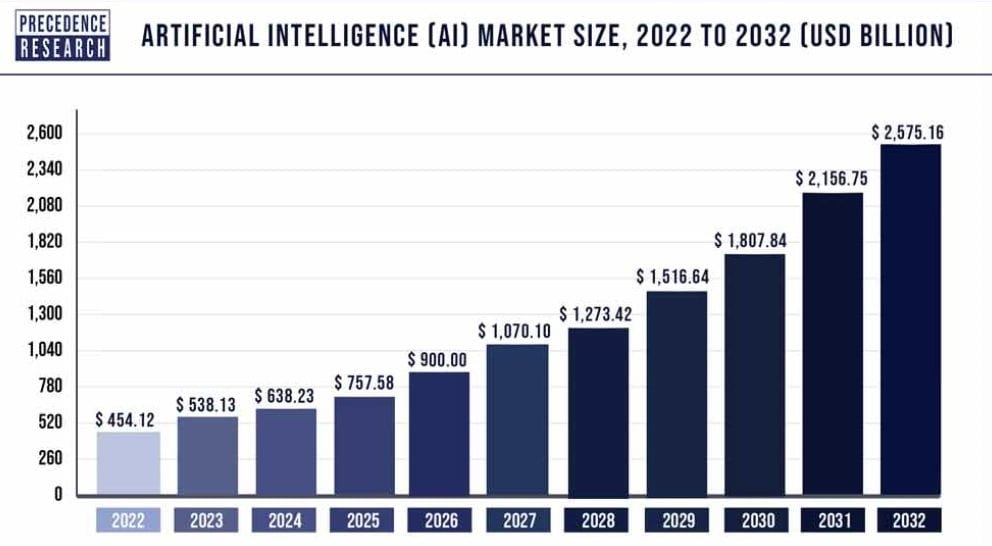Artificial intelligence (AI) is witnessing extensive worldwide integration, as evident from the growing utilization of AI-related technologies and the upswing in AI stock values. This trend has led prominent economists to draw parallels with the late 1990s dot-com bubble, which eventually led to a market collapse. Nevertheless, Goldman Sachs takes a different stance on this matter. In a recent communication, Peter Oppenheimer, the Chief Global Equity Strategist at Goldman Sachs Research, presents a contrasting perspective. They said,
“Even as those stocks have rallied substantially, they don’t appear to be in a bubble. We believe we are still in the relatively early stages of a new technology cycle that is likely to lead to further outperformance.”
The process of “outperformance” seems to be in progress, as the sector gains acknowledgment for its contribution to the stock market’s momentum. Approximately 20 companies, mainly in AI-related fields, have been instrumental in bolstering the S&P 500, nudging it towards positive gains. As previously indicated by Manish Jabra, who leads US equity strategy at Societe Generale, stated, “The AI boom and hype is strong. So strong that without the AI-popular stocks, S&P 500 would be down 2% this year.”

Moreover, a significant number of investors have made substantial investments in anticipation of a surge. As an illustration, Precedence Research foresees an annual growth rate of 23% in Artificial intelligence software sales, with projections reaching $2,575.16 billion by 2032. Despite the considerable optimism surrounding the AI sector, there exist certain obstacles that could impede its ability to surpass expectations.
The Impending Hurdles for Advancing Artificial intelligence
Volatility
The stock prices of Artificial intelligence firms tend to exhibit significant price fluctuations because they are still in their “early phases.” To illustrate, Upstart Holdings [UPST] demonstrated an impressive performance in the Nasdaq 100 Stock Index [$IUXX] [QQQ] at the beginning of August, experiencing a substantial increase of +445%. This surge was largely attributed to the excitement surrounding AI. However, the stock’s worth has since decreased by 50%, underscoring the potential risks associated with stocks that become entangled in the AI frenzy.
Regulatory hurdles
When OpenAI first introduced ChatGPT, there were limited regulations and minimal widespread interest in this field. However, the significant expansion of ChatGPT has now drawn the attention of regulators globally. For example, the EU Artificial intelligence Act is currently in development, with a primary focus on regulating the industry based on risk levels, with more stringent oversight applied to higher-risk AI technologies. The European Union has taken a prominent role in this area, surpassing both the United States and China in terms of regulatory initiatives.
Nonetheless, there is a growing emphasis on the need to regulate this field. Additionally, influential figures such as Elon Musk, Bill Gates, Mark Zuckerberg, and others have convened to discuss the future of Artificial intelligence regulations, potentially wielding substantial influence over the sector.
Reliance on Data
The efficient operation of AI systems relies heavily on extensive datasets. Disruptions like data breaches, challenges with data accuracy, or difficulties in accessing vital data repositories can hinder the effectiveness of AI enterprises.
Competitive Landscape
The AI sector is characterized by fierce competition, with numerous startups and established tech giants vying for market share. This intense rivalry has the potential to reduce profit margins and limit avenues for growth.
These observations suggest that there may not be a speculative bubble in AI stocks. Nevertheless, it remains crucial for investors to conduct comprehensive research and assess the specific fundamentals of individual companies. It is imperative to carefully consider their investment goals and risk tolerance.

